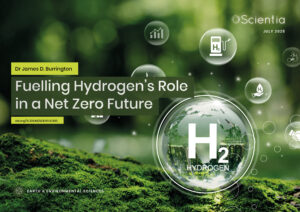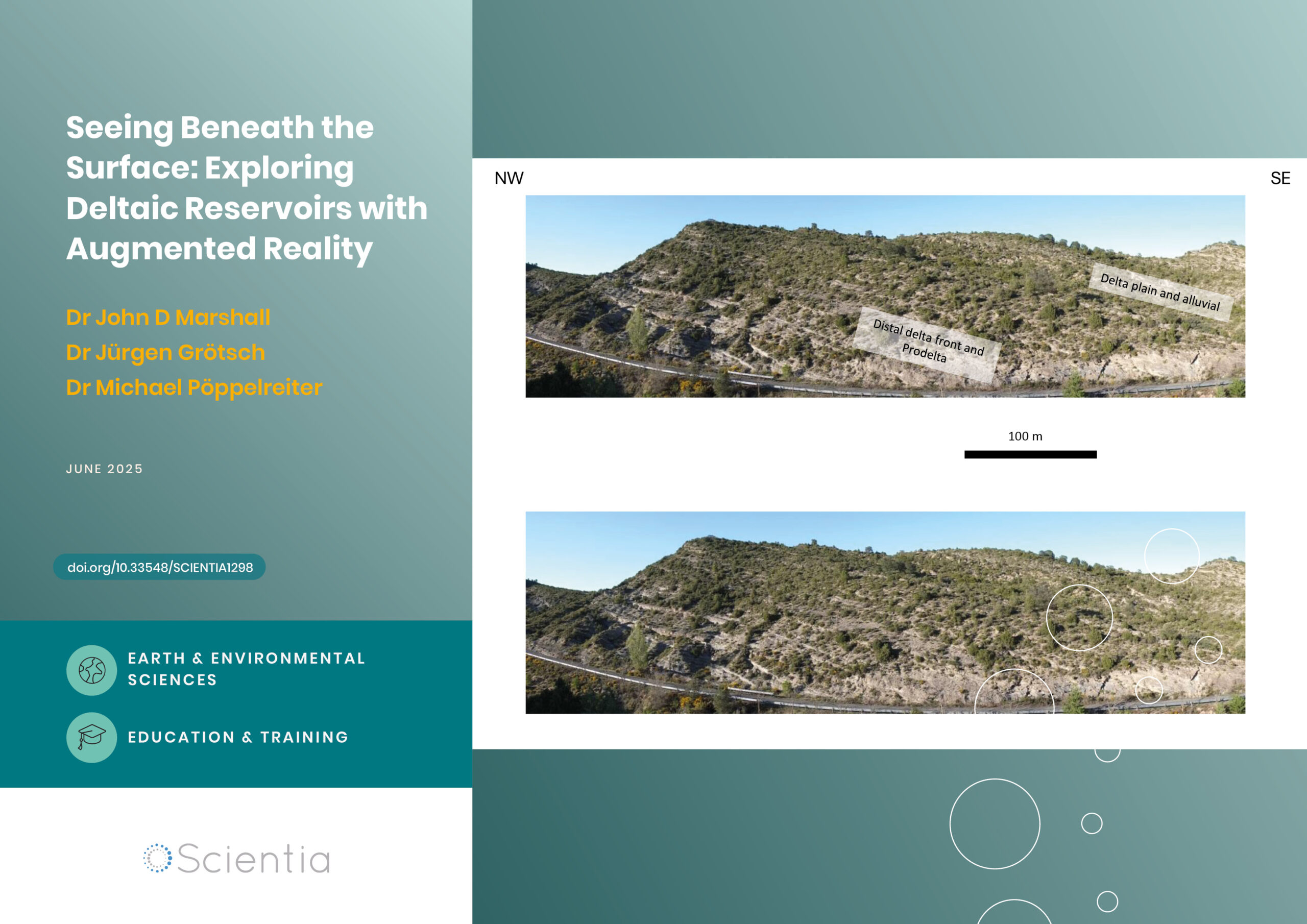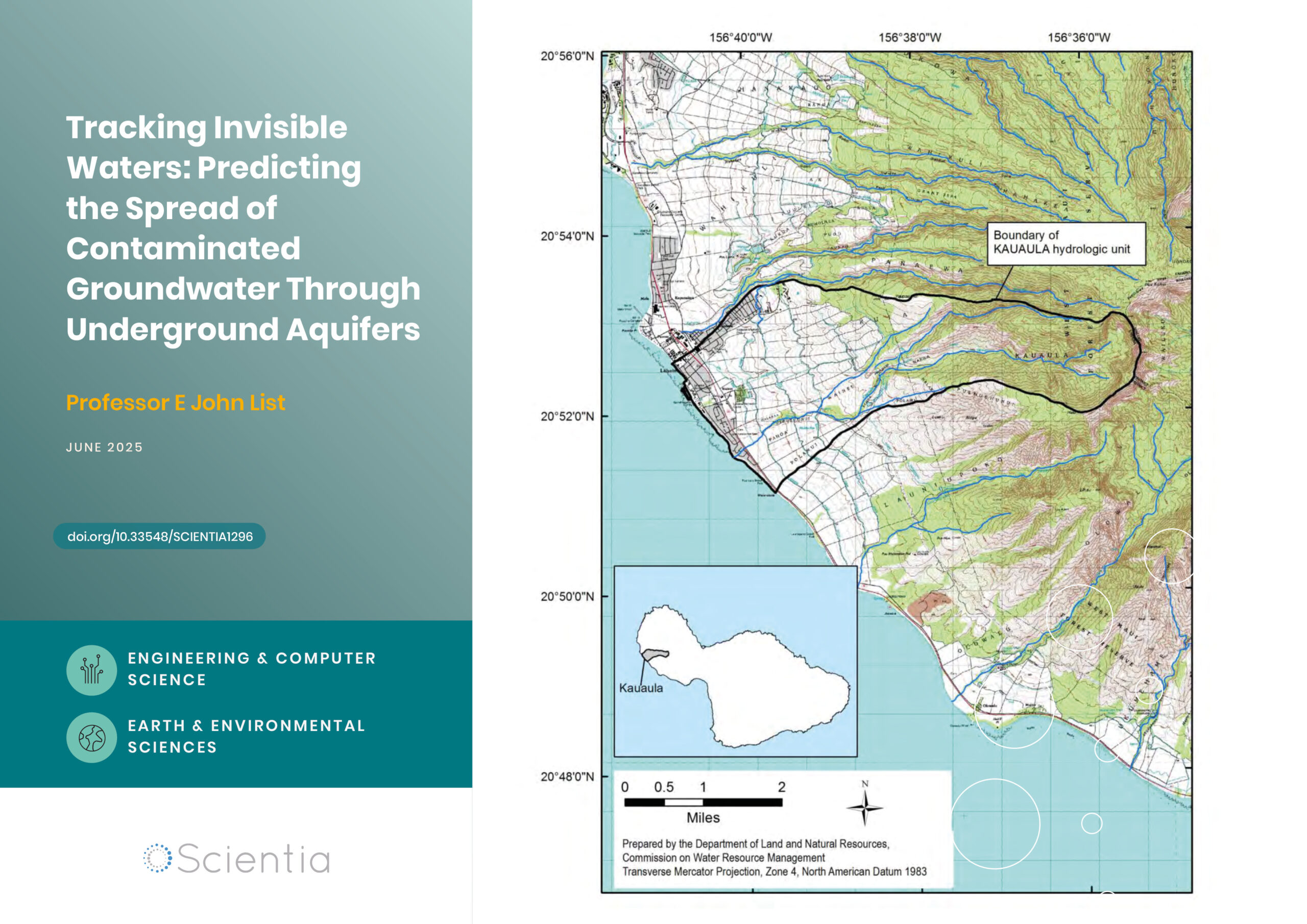Dr James D. Burrington | Fuelling Hydrogen’s Role in a Net Zero Future
Article written by Laura Hemmingham, PhD
Hydrogen is often touted as the fuel of the future, but how much can it really contribute to global decarbonisation? Dr James D. Burrington, founder of NiceChemistry.com, has modelled how hydrogen technologies, particularly green hydrogen, might support worldwide net zero goals. His research applies rigorous metrics to assess energy efficiency, cost, emissions, and land use. This revealed that, while hydrogen may not directly replace electricity, it could be critical in decarbonising sectors where electrification falls short.
A Carbon Capitalising World
By 2050, the world must slash greenhouse gas emissions to net zero, to limit the global temperature rise to 1.5°C, the temperature above which the Intergovernmental Panel on Climate Change (IPCC) warns of significantly increased risks of ecological disasters, such as extreme weather patterns, loss of biodiversity, dangerously rising sea levels, and insecurity of food sources. While solar, wind, and hydroelectric power dominate discussions around decarbonisation, hydrogen has emerged as a potentially powerful, but currently underdeveloped complementary option. Hydrogen, especially that termed ‘green hydrogen’ due to its production without fossil fuels, may be a key lifeline as an energy source in our quest to reach net zero. However, there are debates about how viable an energy source green hydrogen really is.
This question lies at the heart of a research project by Dr Burrington, founder of NiceChemistry.com, who has undertaken a detailed analysis of energy technologies to evaluate the real-world potential of hydrogen in the race to net zero. Using a structured, quantitative framework, the project compares 2021 energy baselines with projected 2050 energy scenarios, comparing hydrogen to other energy sources based on four global performance factors: energy efficiency, carbon dioxide (CO₂) emissions, cost, and land use. His analyses stretch across both energy and non-energy sectors and consider multiple hydrogen production technologies. What emerges is a nuanced, data-driven assessment of hydrogen’s place in a low-carbon future, one that highlights both its promise and its practical limitations.
Why Efficiency Matters as Much as Emissions
In 2021, global energy consumption totalled around 177,000 terawatt-hours (TWh), with three-quarters of that sourced from fossil fuels. These fuels remain dominant largely due to established infrastructure and relatively low direct costs, but they are also remarkably inefficient. In total, fossil fuel use in 2021 produced an estimated 34.8 billion tonnes of CO₂. Dr Burrington’s analysis revealed that, of the 156,000 TW of fossil fuel consumed in 2021, nearly half was lost before the energy was effectively used. This loss mainly occurred during the fuel’s conversion to electricity, and in internal combustion engines.
However, replacing these well-established systems with renewables is not simply a matter of swapping fuel sources —it demands new infrastructure, new efficiencies, and, in many cases, new technologies that do not yet exist at a commercial scale.
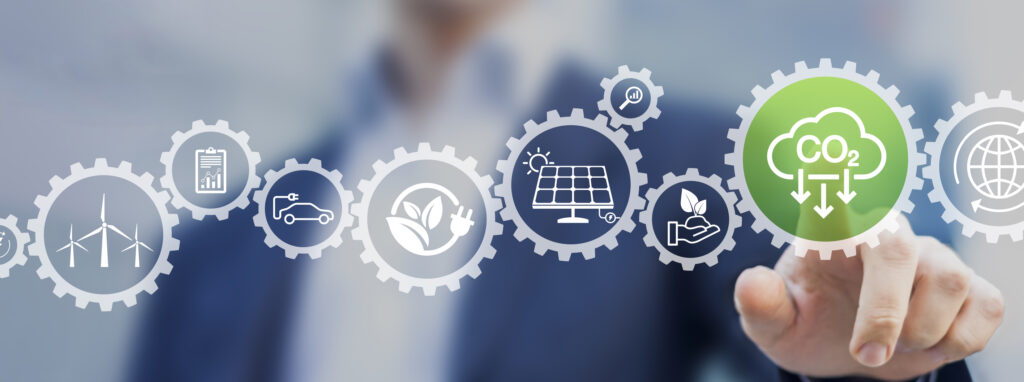
The Net Zero 2050 Scenarios
The International Energy Agency’s Net Zero Emissions (NZE) Scenario for 2050 provides the primary framework for Dr Burrington’s modelling. It forecasts a total energy consumption of 151,000 TWh, which will be achieved through major efficiency improvements and a radical shift in our energy sources. The baseline NZE scenario is dominated by electrification via solar, wind, and hydroelectric /water (collectively referred to as SWW), and hydrogen is set to play only a minor role, which would account for around 4% of energy use, primarily in long-haul transport and industry.
But why? If hydrogen is the ‘clean fuel’ answer to our carbon crisis, why does it barely feature in the most optimistic current models of net-zero energy systems? This limited role is not due to hydrogen’s fundamental properties, as it is indeed clean-burning and energy-dense, but rather to the inefficiencies and costs associated with its production, transport, storage, and use. While the promise of green energy from hydrogen is tangible, these aspects need revolutionising to increase our future reliance on hydrogen as a fuel source.
The Technologies Behind the Fuel
In his analysis, Dr Burrington applies both current and ‘technical potential’ performance factors to the hydrogen production potentials. Technical potential describes the highest plausible performance a technology could achieve based on physical and engineering constraints, but assuming full development and commercial viability. Such a distinction is vital, as evaluating only current capabilities overlooks the future role that emerging technologies may play if properly supported and scaled.
Today, most hydrogen is produced through methane steam reforming (MSR), a process that unfortunately produces high quantities of CO₂. Even when fitted with carbon capture and storage (CCUS) —a technology that captures CO₂ emissions before they can escape into the atmosphere— MSR relies on fossil fuels (natural gas) to produce hydrogen. Electrolysis (a process that splits water into hydrogen and oxygen) is a promising alternative as a renewable process when using SWW electricity. However, the double conversion of energy (that is, the fact that electricity is first converted to hydrogen, and then that hydrogen back into electricity), afflicts the process with significant energy losses.
Two other techniques, termed photocatalytic (PC) and photo-biocatalytic (PB) production of hydrogen, avoid these conversion losses. These processes essentially use sunlight and catalyst systems to split water into hydrogen and oxygen. But these methods are relatively new and in the early stages of development. In order for them to provide the quantities of green energy needed, their low efficiency and high land and capital requirements must be addressed.
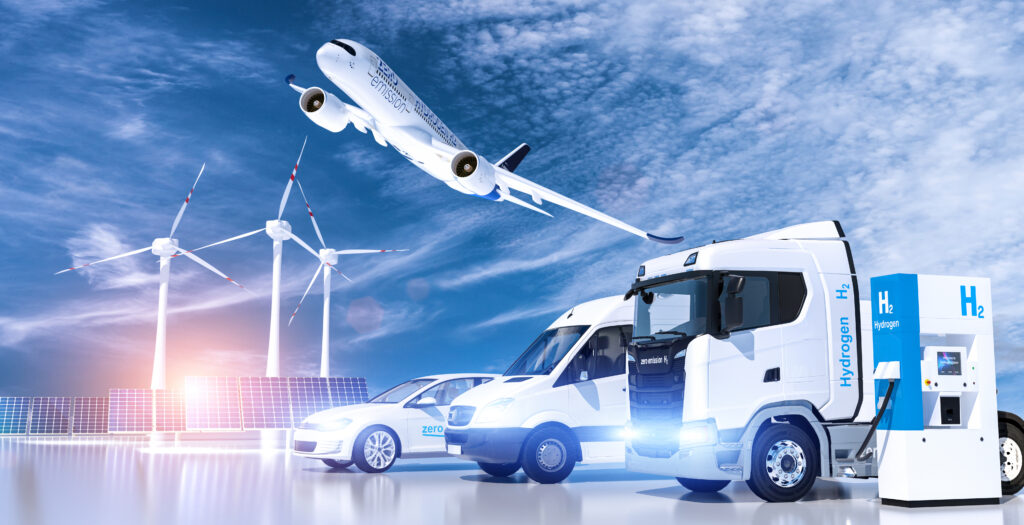
Scenarios and Outcomes: What If Hydrogen Reaches Its Potential?
Using scenario-based modelling, Dr Burrington explores what the 2050 energy landscape might look like if hydrogen technologies are optimised. In one scenario, renewable-powered electrolysis reaches its full potential, contributing around 7% of energy use, an improvement from the baseline 4% in the NZE scenario. In another, where PC/PB hydrogen technologies are supported to reach their full potential, they contribute enough hydrogen to reach 14–15% of total energy. These scenarios show that hydrogen could play a far more substantial role if investment and research succeed.
Under these potential conditions for SWW green hydrogen technologies, global CO₂ emissions from hydrogen production by 2050 could be reduced by up to 1 billion tonnes per year, at 7% of total global energy use, and up to 12 billion tons per year, at the optimistic 14–15% level, compared to baseline 2050 NZE figures. PC/PB hydrogen at its technical potential appears as a highly promising alternative, offering lower costs, higher efficiencies, and smaller land use compared to electrolysis. Such performance gains would be particularly valuable in sectors where direct electrification is impractical, such as commercial aviation, shipping, remote power generation, and certain heavy industrial processes.
Hydrogen Beyond Energy: The Chemical Sector and Green Ammonia
Hydrogen’s role isn’t limited to its use only as an energy source. In 2021, 94 million tonnes of hydrogen were produced globally for industrial uses such as ammonia production, oil refining, and methanol synthesis. This accounted for an additional 1 billion tonnes of CO₂ emissions, primarily due to its production through MSR. By 2050, demand for hydrogen is predicted to grow sixfold, with a third used for energy and two-thirds for industry (the latter accounting for 3.7 billion tons of CO2 by MSR). Conversion to renewable hydrogen from SWW electrolysis at its technical potential would reduce that amount by 3 billion tons, without increasing cost or land use.
Green ammonia also stands out as a particularly promising application. Currently used in fertiliser production, but also seen as an hydrogen energy carrier, green ammonia could displace fossil-based methods and reduce emissions. Since it is produced from hydrogen and, unlike hydrogen, can be stored and transported using existing infrastructure, green ammonia can be considered a transportable, storable form of hydrogen, which can then be used as fuel directly, or by conversion back to hydrogen, especially useful in remote or grid-constrained regions.
Dr Burrington also presents cost projections indicating that dedicated innovation could lower green hydrogen and ammonia prices significantly. In tandem with policy mechanisms like carbon pricing or renewable mandates, green ammonia could enable a smoother transition in both industrial and energy domains, boosting hydrogen’s role beyond its currently limited applications.
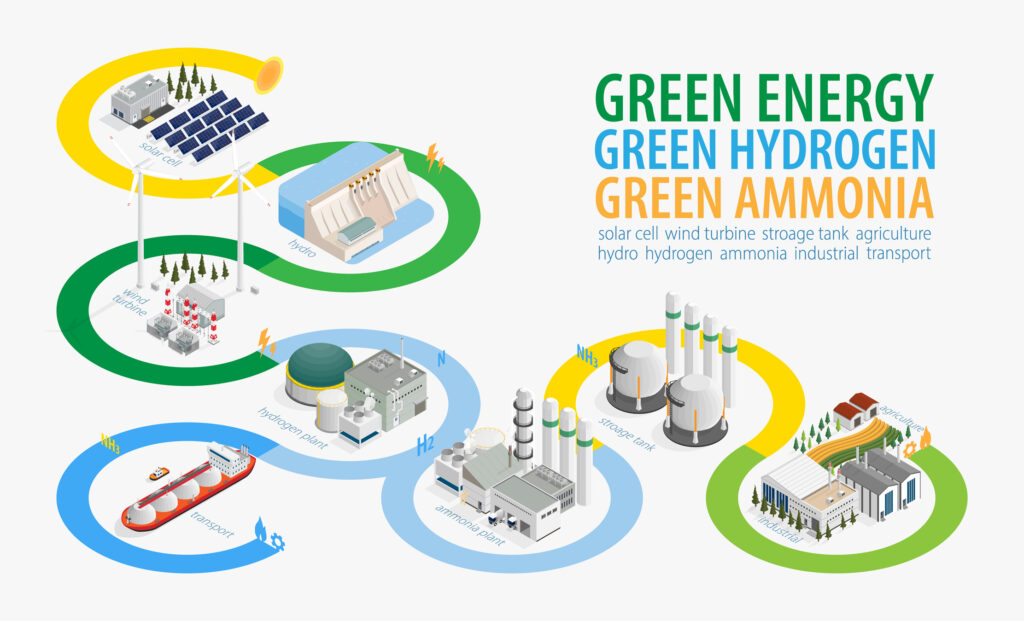
Hydrogen Will Be Handy, But Not the Hero
Despite these encouraging projections, Dr Burrington is careful not to overstate hydrogen’s case. For use within a local grid and for most purposes, his comparisons show that renewable electricity from solar or wind consistently outperforms hydrogen in terms of efficiency, cost, emissions, and land use, when used directly for charging electric vehicles or powering industrial equipment.
However, the real value of hydrogen lies in its flexibility. Unlike electricity, and when converted to a carrier like ammonia, hydrogen can be stored for long periods, transported over long distances, and used in combustion or chemical processes where electrification isn’t possible. While perhaps not the powerhouse of the future, these characteristics still position hydrogen as an indispensable tool in the net zero transition.
Adaptation and Innovation Will Be Key
Unlocking the full potential of green hydrogen will require substantial investment, not just in research and development, but in infrastructure, regulation, and market development, since the scale of necessary transformation is vast. Entire hydrogen supply chains will have to be built or adapted, from generation and storage to transport and end-use.
Furthermore, land use and materials will have to be carefully managed. While electrolysis and PC/PB hydrogen production have the potential to be land-efficient, they require rare or costly components and must be scaled in a way that complements rather than competes with solar and wind deployment. As Dr Burrington’s analysis shows, integrating hydrogen into established chemical sectors, particularly via green ammonia, offers a potential route forward, piggybacking onto existing logistics while decarbonising high-impact industrial processes. Lastly, developing policy frameworks will be key, and must be guided and supported by detailed, objective analyses, much in the same vein as Dr Burrington’s work.
Hydrogen’s Value in Reaching Net Zero
Dr James Burrington’s comprehensive analysis offers an invaluable perspective on hydrogen’s potential within the broader clean energy landscape. His use of consistent, quantitative metrics across current and future scenarios allows for a realistic yet hopeful vision of hydrogen’s role in decarbonisation.
The key message from Dr Burrington’s analysis is that while hydrogen may not be the centrepiece of the energy transition, it could help decarbonise sectors where other options fall short, with focused development and targeted deployment. In the story of net zero, hydrogen may not be the hero, but it could still be a vital supporting character.
SHARE
DOWNLOAD E-BOOK
REFERENCE
https://doi.org/10.33548/SCIENTIA1300
MEET THE RESEARCHER

Dr James D. Burrington
NiceChemistry.com
Gates Mills, Ohio
United States
Dr James Burrington is a chemist and renewable energy researcher specialising in catalysis, green hydrogen production, and sustainable industrial chemistry. He began his career in the 1970s exploring nitrogen-containing compounds at the Massachusetts Institute of Technology, where he completed his PhD in organic chemistry. Over the next four decades, he held senior research roles at BP and The Lubrizol Corporation, leading work in process chemistry, lubricant additives, and renewable materials. He is now founder and principal scientist at NiceChemistry.com, contributing to science and education through publications, consulting, and energy analysis. His recent work focuses on hydrogen technologies and energy scenarios aligned with 2050 net-zero targets. His scenario modelling, which is based on quantitative metrics of efficiency, cost, emissions, and land use, has informed decarbonisation pathways across energy and industry. Dr Burrington has published widely on catalytic mechanisms, controlled release technologies, and sustainable chemical processes, and is the author of Industrial Catalysis: Chemistry and Mechanism. He is a Fellow of the American Chemical Society and has received multiple awards for contributions to catalysis, chemical mechanism, applied chemistry and lubricant additives.
CONTACT
E: chemdr4@gmail.com
ORCID: https://orcid.org/0009-0006-1233-5184
FURTHER READING
JD Burrington, Renewable Energy Technical Potential Performance for Zero Carbon Emissions, ACS Omega, 2024, 9, 24, 25841-25858, DOI: https://doi.org/10.1021/acsomega.4c00273
CA Morales-Rivera, N Proust, JD Burrington et al., Computational Screening of Lewis Acid Catalysts for the Ene Reaction between Maleic Anhydride and Polyisobutylene, Industrial & Engineering Chemistry Research, 2021, 60, 1, 154–161, DOI: https://doi.org/10.1021/acs.iecr.0c04860
Burrington, James D., Industrial Catalysis: Chemistry and Mechanism. Imperial College Press, 2016, London. ISBN 9781783268979.
James D. Burrington, John R. Johnson and John K. Pudelski, “Cationic polymerization using heteropolyacid salt catalysis”, Topics in Catalysis, 23 (1-4), 175-181, August, 2003.

REPUBLISH OUR ARTICLES
We encourage all formats of sharing and republishing of our articles. Whether you want to host on your website, publication or blog, we welcome this. Find out more
Creative Commons Licence (CC BY 4.0)
This work is licensed under a Creative Commons Attribution 4.0 International License. 
What does this mean?
Share: You can copy and redistribute the material in any medium or format
Adapt: You can change, and build upon the material for any purpose, even commercially.
Credit: You must give appropriate credit, provide a link to the license, and indicate if changes were made.
SUBSCRIBE NOW
Follow Us
MORE ARTICLES YOU MAY LIKE
Nick Martin | The Future of Floods: Smarter Risk Tools for Sustainable Water Management in a Changing Climate
Sustainable decision-making requires balancing the costs borne by today’s society with those that will fall on future generations. Climate change is intensifying extreme weather, making floods more severe because a warmer atmosphere can hold and deliver a larger volume of water as precipitation. It may also be the case that severe floods are becoming more frequent as drought becomes more frequent, average conditions rarely occur, and weather oscillates between short duration wet and long duration dry extremes. Worryingly, traditional infrastructure (often designed using outdated, backward-looking models) risks failing under these evolving conditions.
Nick Martin from Vodanube LLC, and his colleagues have applied Probabilistic Risk Assessment (PRA) to flood inundation. Their research optimises current adaptation and future mitigation strategies, even while acknowledging PRA’s limitations. The team demonstrates how this approach can guide more resilient water resource management, and highlights opportunities for further study.
Dr Shigetaka Hayano | The Rubber Revolution: Cracking the Code for Tire Recycling!
Traditionally, rubber waste was nearly impossible to recycle due to crosslinked sulphur bonds. But a team of researchers led by Dr Shigetaka Hayano from Zeon Corporation, in Japan, have achieved a groundbreaking feat in rubber recycling. Using mild conditions for the reaction, scientists have overcome the unfavourable cross-linked structure and have achieved recovery of rubber’s original monomers. This process restores cyclopentene monomers with 90% efficiency, allowing old tires and industrial rubber waste to be chemically recycled into high quality materials. If scaled up, this innovation could revolutionise waste management, reduce environmental pollution, and enable a circular economy for rubber production.
Seeing Beneath the Surface: Exploring Deltaic Reservoirs with Augmented Reality
In the Aínsa Basin of the Spanish Pyrenees, the Mondot-1 well was drilled, cored, and fully logged to capture a detailed record of a long-buried ancient river delta system. Dr. John D. Marshall, Dr. Jürgen Grötsch, and Dr. Michael C. Pöppelreiter with co-workers at Shell International used this core to trace how sediments once flowed across the landscape, and were deposited under shifting tectonic conditions. The team employed augmented reality and interactive virtual displays; these innovative tools offer new ways to explore subsurface depositional systems, and are particularly useful in locations where physical access to the core is difficult, or no longer possible.
Professor E John List | Tracking Invisible Waters: Predicting the Spread of Contaminated Groundwater Through Underground Aquifers
When we think about water pollution, we often picture oil spills on the ocean surface or chemicals flowing down rivers. But some of the most significant environmental challenges occur completely out of sight, deep underground, where contaminated water moves through layers of rock and soil. Understanding how these invisible pollutants travel has profound implications for protecting our drinking water supplies and coastal ecosystems. Groundwater engineer Dr E. John List has developed an approach that challenges fundamental assumptions about how contamination spreads underground.

